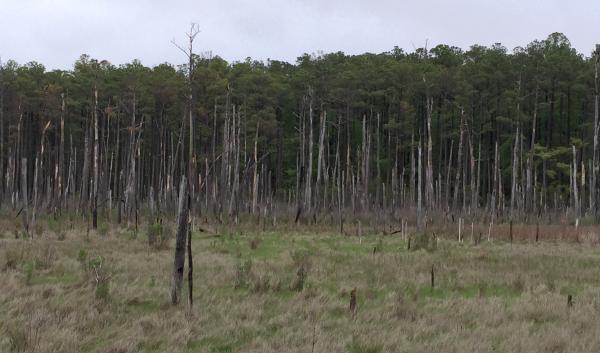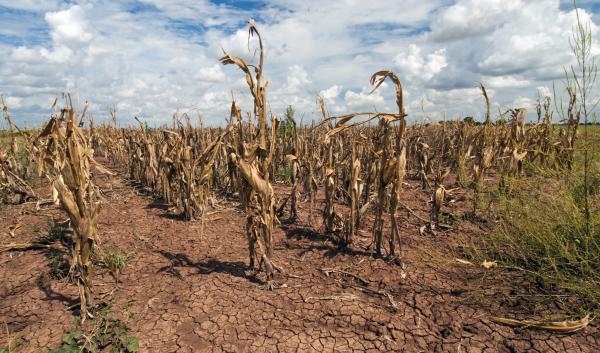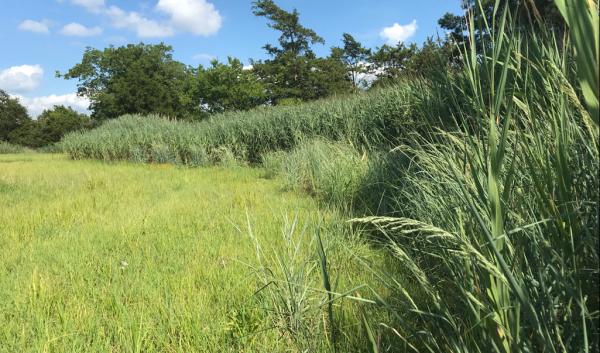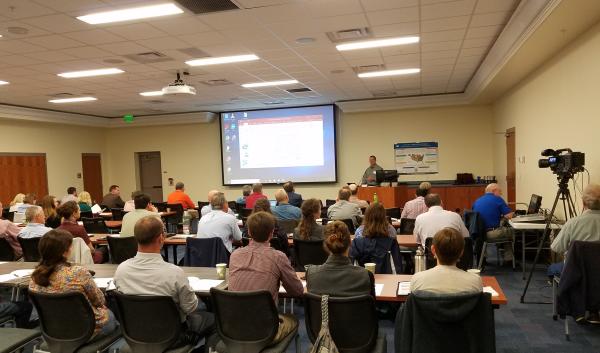Saltwater Intrusion
Salt water intrusion is impacting coastal areas around the US as sea levels rise, groundwater extraction becomes increasingly saline, canal and drainage networks carry sea water access further inland, and storm surges drive seawater over working lands. Coastal wetlands and barrier islands buffer inland areas from storm surge but rising sea levels are putting wetland ecosystems at risk. Salt water degrades these sites by killing less salt-tolerant species and leaving behind “ghost forests,” or wetland areas with only standing dead trees. Over time, salt water intrusion along with rising sea levels convert these diverse wetland ecosystems to grass marshes and eventually to open water. The loss in forest and agricultural productivity due to increased soil salinity will also result in decreased ecosystem diversity and habitat for birds, fish, and the animals that prey on them. Salt water intrusion also increases peat decomposition, which in turn decreases the capacity of these soils to sequester carbon, ultimately increasing the amount of greenhouse gases in the atmosphere. Loss of peat and subsequent land subsistence, further promote inland salt water migration and working land degradation.
Producers and land managers will likely be forced to switch to more salt-tolerant crops or species, alter land use practices (e.g., convert from row crops to hay fields, or move impacted lands into conservation easement programs). The USDA Climate Hubs are working with researchers and land managers to identify at-risk lands, and develop and implement practices to extend their period of productivity.







